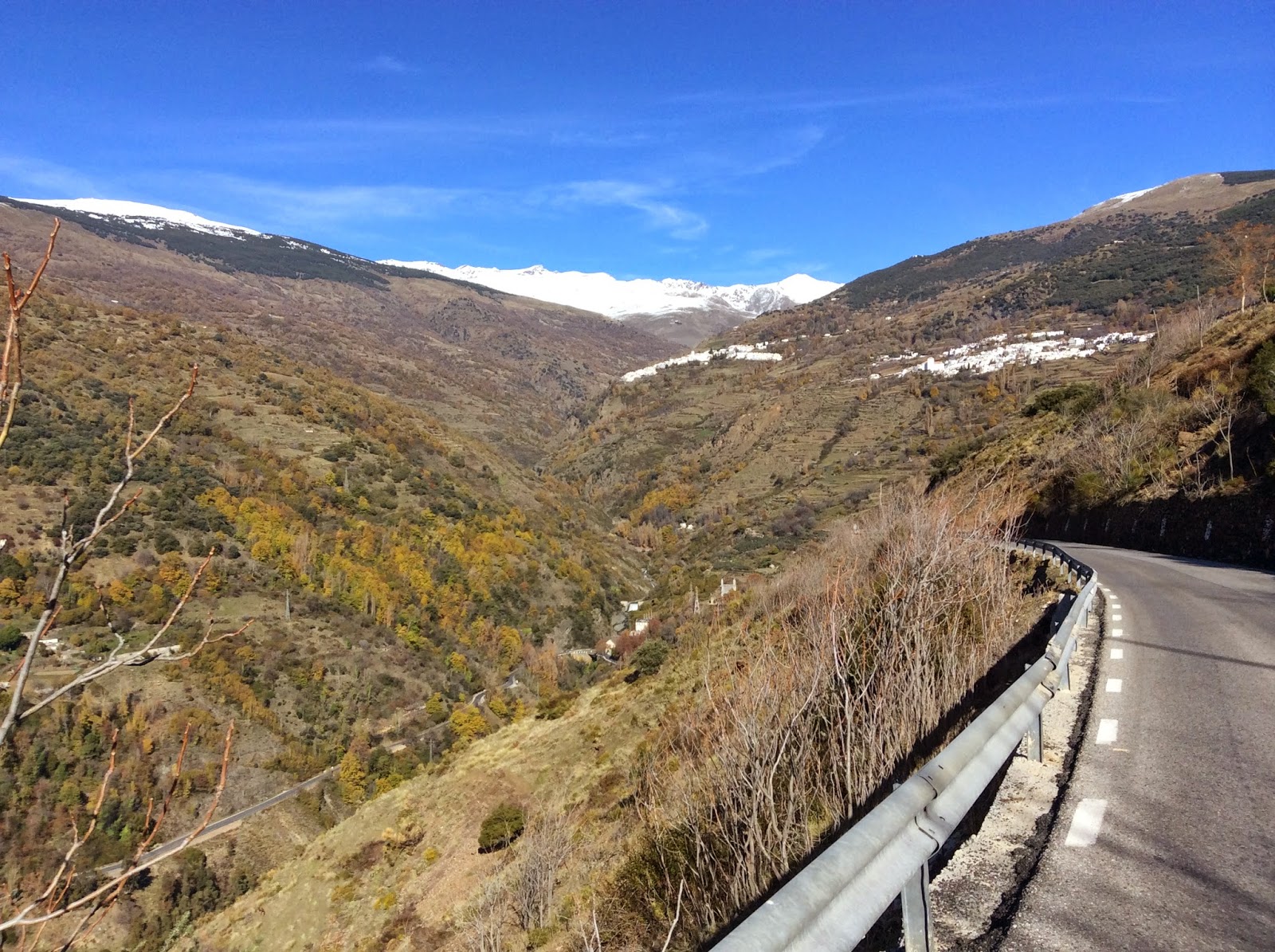We drove from Motril to an area of Spain called the Alpujara. Then from there we drove to Marbella.
This is the town of Lanjaron. Really cute place.
There is Lanjaron hugging the hillside.
Now we are approaching two other towns in the Alpujarra. The one WAY in the distance is Capileira, where we spent some time.
Capileira
I just loved this "door" to one house. Surely there was something more substantial behind that cloth because it's quite cold here.
A beautiful entryway to someone's home
Heading back down from Capileira. It's the little line of white hugging the hillside right under where the snow-capped mountains are in the middle. The line of white to the left of Capileira is Bubion.
This is Pampaneira
Here is a little about the Alpujarra region - taken from the website Andalucia.com
The cultural interest of the region lies in its fifty-odd villages, which were the last stronghold of the Spanish Muslims, or Moors. Soon after the Castillians took Granada in 1492, all the city´s Moors were forced to convert to Christianity. Those who refused took to the hills, settling in this remote, inaccessible area. Constant pressure from the Christians led to a bloody uprising, the Morisco Rebellion of 1568, which was ruthlessly crushed out, with the public execution of the leader, Ben Humeya, in the main square of Granada. Soon followed a royal decree expelling from the Kingdom of Granada all people of Arab descent, since the "new Christians", as the converts were called, were all suspected of being ¨crypto-Muslims¨ in secret...
The villages of the Alpujarra were resettled with some 12,000 Christian families brought by King Philip II from Galicia and Asturias in north-western Spain. However, these unique hamlets have retained their traditional Berber architecture - terraced clusters of grey-white box-shaped houses with flat clay roofs - which is still common in the Rif and Atlas mountains of Morocco. Perhaps the most picturesque villages are the famous trio which cling, one close above the other, to the slopes of the Poqueira Valley, where red peppers and tomatoes are still set out to dry on the flat clay roofs, among the tall round chimney pots. Pampaneira, at the bottom, bustles with crafts shops and restaurants, as does Bubión, half way up the slope, with its massive square church tower standing on a plaza of rough paving stones. But to savour the authentic Alpujarra, go to Capileira at the top of the valley - the name is an Arabic derivation of the Latin word for head or top - and walk down from the road into the lower streets of the village, where the rocky streets, overhanging passageways and sagging, stone houses have still not been remodelled and prettified for contemporary living...
After driving to those three towns, we drove back down to Lanjaron where we just happened upon a nice place to have lunch and then our next destination was perhaps Malaga. We didn't see any hotels around there, passed by Torremolinos (where we had stayed back in 1978) and by the time we got to Marbella it was getting pretty late. And we were having a horrible time finding hotels. Finally, Guillermo decided to go down closer to the water and there we found a couple. After checking into one of them, we walked to some grocery stores. This area is definitely for the wealthy - lots of upscale stores and many beautiful places.
Post for Friday, December 12th
As we were driving out of Marbella, we decided to check out their beaches. We weren't all that impressed. Lots of fancy restaurants along the beach, though. First, though, a view from our hotel window.
Then a view we got of the beach. The scenery is pretty.
We drove from Marbella to Ronda and then to Jaen.














No comments:
Post a Comment